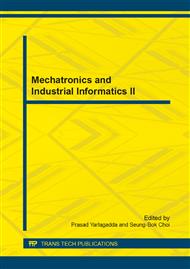[1]
Xiaoping Gu. Research on dot gain in ink-jet printing. Wuxi: Southern Yangtze University( 2009).
Google Scholar
[2]
Ruyun QU, Zhengning Tang, Song Yang. Packaging Engineering, Vol. 28(2007), pp.61-63. In Chinese.
Google Scholar
[3]
Shikun Xi. The study on physical dot gain of 2nd-order FM halftone based on ink spreading in all ink superposition conditions. Wuxi: Southern Yangtze University( 2009).
DOI: 10.1117/12.907224
Google Scholar
[4]
Bai Chun-yan. Research on prediction of dot area and dot gain in inkjet printing. Wuxi: Southern Yangtze University( 2009).
Google Scholar
[5]
Yang, L. Journal of Imaging Science and Technology , Vol. 48( 2004), p, 347-353.
Google Scholar
[6]
J.S. Arney, Shinya Yamaguchi. Journal of Imaging Science and Technology, , Vol. 42(1999), p.353.
Google Scholar
[7]
Geoffery L. Rogers. Journal of Imaging Science and Technology, Vol. 48( 2004), p.18.
Google Scholar
[8]
L. Yang. Imaging Sci. Technology, Vol. 48( 2004), pp.347-353.
Google Scholar
[9]
Th. Bugnon, M. Brichon, R.D. Hersch. Simplified Ink Spreading Equations for CMYK Halftone Prints. Proc. SPIE Color Imaging XIII: Processing, Hardcopy, and Application (2007), p.124.
DOI: 10.1117/12.761710
Google Scholar
[10]
R. Rossier, R.D. Hersch. Calibrating the ink spreading curves enhanced Yule-Nielsen modified spectral Neugebauer model with the two-by-two dot centering printer model[C]. Proc. SPIE Color Imaging XIII: Processing, Hardcopy, and Applications(2009).
DOI: 10.1117/12.804818
Google Scholar
[11]
Hersch R D, Crété F. Improving the Yule-Nielsen modified spectral Neugebauer model by dot surface coverages depending on the ink superposition condition. Proc. SPIE ( 2005), p.434.
DOI: 10.1117/12.588907
Google Scholar
[12]
Jinlin Xu, Junfei Xu. China printing and packaging study, Vol. 01(2012), pp.1-5. In Chinese.
Google Scholar
[13]
Hue P. Le. Journal of Imaging Science and Technology Vol. 42(1998), p.49–62.
Google Scholar
[14]
F. Rousselle, Th. Bugnon, R.D. Hersch. Spectral prediction model for variable dot-size printers. IS&T/SID's 16th Color Imaging Conference (2008), pp.73-78.
DOI: 10.2352/cic.2008.16.1.art00014
Google Scholar
[15]
Weiyou Hu. Packaging Engineering, Vol. 28(2007), pp.61-63. In Chinese.
Google Scholar


